Pirimiphos-methyl
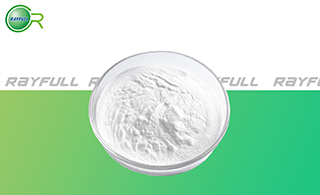 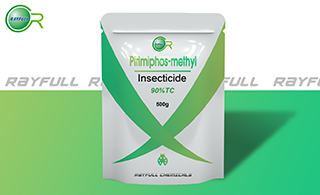 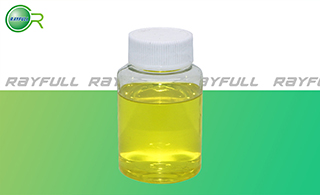 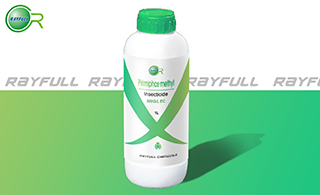 甲基嘧啶磷 甲基嘧啶磷
Introduction: Pirimiphos-methyl is a broad-spectrum organophosphorus insecticide and acaricide, with both contact and fumigant action. In plants, it penetrates leaf tissue and exhibits translaminar action but is of short persistence. When applied to stored agricultural commodities (such as grain and nuts) or to the fabric of buildings, it provides longer-lasting pest control. It is also effective for space treatment and as a mosquito larvicide. Pirimiphos-methyl is used for controlling a wide range of chewing, sucking and boring insects and mites in warehouses, stored grain, animal houses, domestic and industrial premises; various mites on vegetables, ornamentals, bulb flowers, sugar cane, maize, sorghum, rice, citrus and other fruit, olives, vines, alfalfa, cereals; and for controlling certain glasshouse pests (especially whiteflies, thrips, mealybugs, aphids, and mites).
Common name: Pirimiphos-methyl
Another name: Pirimifosmethyl; Actellic; Actellifog; Actelic; Silosan; Methylpirimiphos; Pyridimine phosphate; Sybol 2; Aktelik; Aktellik; BLEX; pirimiphosmethyl; Pyrimiphos-methyl; etc.
Chemical name:
O-2-diethylamino-6-methylpyrimidin-4-yl O,O-dimethyl phosphorothioate
Empirical formula: C11H20N3O3PS
Structural formula:
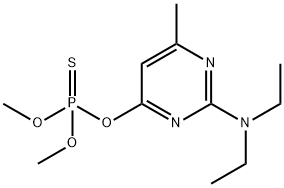
Mol. Weight: 305.33 g/mol
CAS No.: 29232-93-7
Specifications
Leading Pirimiphos-methyl supplier
Pirimiphos-methyl 90% TC
Pirimiphos-methyl 95% TC
Pirimiphos-methyl 500 g/L EC
Packing:
BULK PACKING
Powder: 25kg/Bag, 25kg/Drum, 50kg/Drum etc.
Liquid: 200L/Drum, 20L/Drum, 10L/Drum etc.
SMALL PACKING
Powder: 1kg/Alu bag, 500g/Alu bag, 200g/Alu bag, 100g/Alu bag, 50g/Alu bag, 15g/Alu bag etc.
Liquid: 5L/Drum, 1L/Bottle, 500ml/Bottle, 250ml/Bottle, 100ml/Bottle, 50ml/Bottle etc.
Customerized packing label
Pirimiphos-methyl FAO standard
Professional registration
HAZARDS IDENTIFICATION
Hazard statement(s)
H302 (100%): Harmful if swallowed.
H400 (100%): Very toxic to aquatic life.
H410 (100%): Very toxic to aquatic life with long lasting effects.
Precautionary statement(s)
P264: Wash ... thoroughly after handling.
P270: Do not eat, drink or smoke when using this product.
P273: Avoid release to the environment.
P301+P312: IF SWALLOWED: call a POISON CENTER/doctor/... IF you feel unwell.
P330: Rinse mouth.
P391: Collect spillage.
P501: Dispose of contents/container to.
Supplemental Hazard Statements: none.
MAMMALIAN TOXICOLOGY
Acute toxicity: 1) Acute oral LD50 for rats is 1414 mg/kg 2) Acute dermal LD50 for rats is >2000 mg/kg. 3) Acute inhalation toxicity LC50 (4 h) for rats is >4.7 mg/L. 4) Skin irritation: Slightly irritating to skin (rabbits). 5) Eye irritation: Slightly irritating to eyes (rabbits). 6) Skin sensitization for guinea pig: Weak response (Magnusson and Kligman test).
NOEL: (2 y) for rats is 0.4 mg/kg/day, (2 y) for dogs is 2 mg/kg/day. Other Not carcinogenic. Not genotoxic.
ADI (JMPR) 0-0.03 mg/kg b.w. [1992, 2006]
Classification:
WHO Classification: II (Moderately hazardous)
EC Risk Classification: Xn - Harmful: R22; N - Dangerous for the environment: R50, R53
US EPA Classification (formulation): III (Caution - Slightly toxic)
ECOTOXICOLOGY
Effect on birds: Acute oral LD50 for Mallard is >1695 mg/kg. Effect on fish: Acute LC50 (96 h) for Rainbow trout is 0.404 mg/l. Effects on aquatic invertebrates: Acute EC50 (48 h) for Daphnia magna is 0.00021 mg/l. Effects on algae: Acute 72 hour EC50 for Pseudokirchneriella subcapitata is 1.0 mg/l. Effects on bees: Oral acute 48 hour LD50 is >0.22 μg/bee.
ENVIRONMENTAL FATE
EHC 63 (WHO, 1986; a general review of organophosphorus insecticides). Animals In mammals, the P-O bond is cleaved extensively and N-dealkylation and/or conjugation is a further step in the metabolism of the pyrimidine leaving group. Plants Rapidly evaporates. After 2-3 days, <10% remains on plants, including the degradation product O-2-ethylamino-6-methylpyrimidin-4-yl O,O-dimethyl phosphorothioate. On stored cereals, DT50 >2 mo. Soil/Environment Soil DT50 (aerobic and anaerobic) is typically 3.5-25 d.
Usage: Pirimiphos-methyl was originally developed by Imperial Chemical Industries Ltd., now Syngenta. It is an organophosphate fumigant insecticide used to control a wide range of insects and mites.
Application: Biochemistry Cholinesterase inhibitor. Mode of action Broad-spectrum insecticide and acaricide with contact and respiratory action. Penetrates the leaf tissue and exhibits translaminar action. Uses Control of a wide range of insects and mites in warehouses, stored grain, animal houses, domestic and industrial premises; chewing insects, sucking insects, boring insects, and mites on vegetables, ornamentals, bulb flowers, sugar cane, maize, sorghum, rice, citrus and other fruit, olives, vines, alfalfa, cereals, etc.; and glasshouse pests (especially whitefly, thrips, mealybugs, aphids, and mites) on tomatoes, cucumbers, capsicums, aubergines, and other glasshouse crops.
| 






